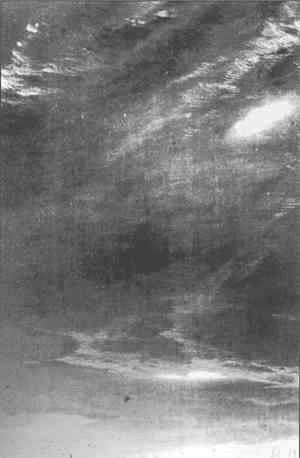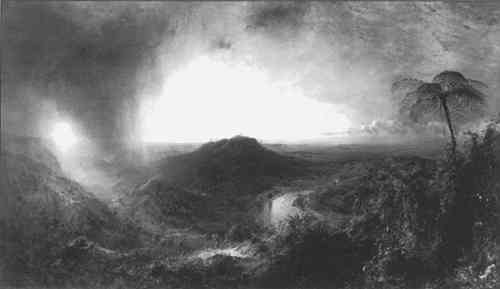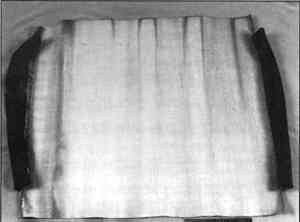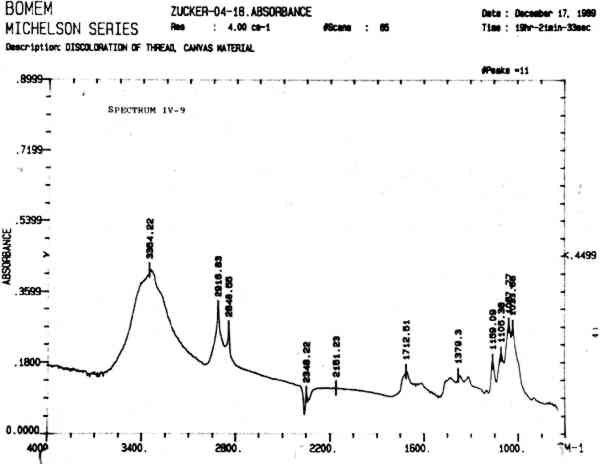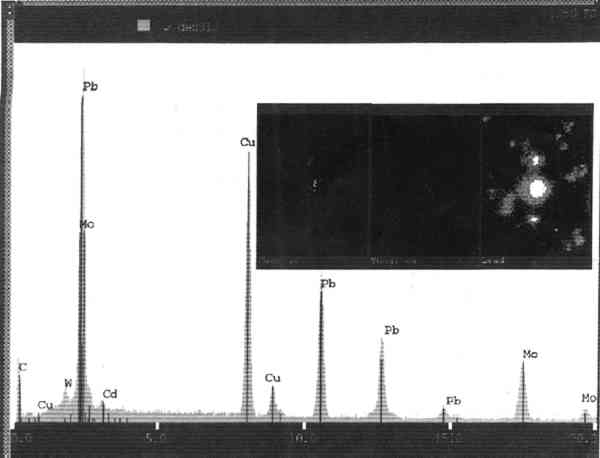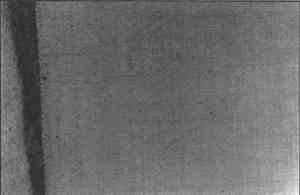FROM THE GROUND UP: THE GROUND IN 19TH-CENTURY AMERICAN PICTURESJOYCE ZUCKER
2 SOME PROBLEMS ENCOUNTERED IN 19TH-CENTURY GROUNDSIn February 1885, Frederic Church responded to a notice from the Corcoran Gallery of Art, Washington, D.C., that his great Niagara (1857) (fig. 8) had vertical streaks through the sky and the water. He replied that the “obnoxious” streaks were due to the canvas maker Winsor and Newton. He attributed the streaks to the use of sugar of lead–that is, lead acetate drier–in the canvas preparation to hasten the drying process. Church explained that the only pictures to develop this problem were those painted on Winsor and Newton Roman canvas. He recounts that it often took years for the streaks to work themselves through to the surface and that many years before he had carefully repainted the sky of Niagara to cover streaks. Church (1885) recommended that a restorer from New York, Mr. Oliver, undertake the repairs. It is likely that Church purchased the fabric in question from William Schaus on lower Broadway. According to an invoice in the archive at Olana State Historic Site, Church purchased Winsor and Newton Roman canvas from Schaus in 1860, the year he painted Twilight in the Wilderness(fig. 9), another picture with severe ground staining. In 1857, Schaus is listed in the New York City directory as “importer of the best English canvas, …purchasers can always rely to find here the very best articles from the most celebrated London and Paris manufacturers” (quoted in Katlan 1987, 220).
2.1 GROUND STAININGGround staining is a phenomenon peculiar to many paintings by artists of the Hudson River School. This is not to say, however, that it is limited to these artists. Ground staining is evident in the work of Church, Bierstadt, Heade, Kensett, Gifford, Cole, and others. As Church
One conservator looking at stains in Kensett's work described “slight discoloration occurring in patterns resembling wide brush strokes but seems to be coming from a layer under the paint.” She suggested that Kensett's experimentation with colored or toned primings might have accounted for some of the problems in his late work. Another factor might have been the modification of his usual paint mixture to “achieve greater freedom and fluidity of brushwork” (Dwyer 1985, 177–78). She finds that the most disfiguring and least explicable alteration occurs in Salt Meadow in October (1873; Metropolitan Museum of Art).
Church identified the cause of the ground staining to be the inclusion of lead acetate in the ground layer. He explained that an artists' colorman of his acquaintance who made grounds with lead acetate had this staining problem develop. Church owned more than a dozen texts on chemistry, including Field's Chromatography. Field (1869, 52) warned: “The inexperienced ought here to be guarded against the highly improper practice of some artists, who strew their pictures, while wet, with acetate of lead; which though it may promote present drying, will ultimately effloresce on the surface of the work and throw off the color in sandy spots.” What Field called efflorescence leads us to the problem of bloom. In general, this phenomenon–the appearance of a white or bluish white opaque or semi-opaque film on the surface of an oil painting–is prevalent throughout Church's work. It is most visible in the hundreds of architectural sketches in the archive at Olana State Historic Site (fig. 12). On these sketches, bloom appears as a bluish white hazy film that seems to be waxy in nature. Similar bloom has been identified on other pictures as lead stearate (Williams 1988). On Church's architectural sketches and on other oil-on-paper works, there is extensive bloom, yet there is no ground staining (fig. 13). This phenomenon suggests the possibility that the size and/or fabric support together with the materials of the ground may contain the combination of factors producing ground staining. The architectural sketches were executed quickly. No doubt Church wished them to dry quickly and so would add extra drier. It is quite possible that the drier enhanced the formation of bloom and staining. Based on bills in the Olana archive we know that Church ordered large quantities of a drier called sicatif de Courtrai from Goupil & Co.
2.2 ANALYSISAnother fortuitous find in the Olana archive sheds additional light on this subject. An unused, rolled piece of primed linen was identified during a site survey (fig. 14), measuring 78.5 cm from selvage to selvage, 74 cm long with a plain tabby weave having 18 warp and weft threads per cm.
Polarizing microscopy showed that the linen was coated with a layer of calcium carbonate with a very thin layer of lead-white on top. It appeared that either an oily coating had been applied overall or that there was excess oil in the top layer of lead-white. The selvage on one side appeared to be saturated with oil. Oil had penetrated to the reverse irregularly. Stains on the front did not correspond to areas where oil has penetrated to the reverse. Fourier transform infrared spectroscopy analysis of a sample from this canvas was undertaken. Unfortunately the analysis was inconclusive in identifying the materials in the size layer of the canvas. Significant amounts of long chain C18 alkyl compound, categorized as most likely a C18 carboxylic acid salt were identified (fig. 15). The analyst suggested that the C18 alkyl compound was the reaction product of the C18 alkyl moiety in dried linseed oil with an inorganic metal (Miaw 1989). A possible source for the metal is a lead drier such as lead acetate or the lead-white pigment. Lead was confirmed as the primary metallic component in the bloom material using an analytical
2.3 POSSIBLE MECHANISMThe white material or bloom proved to be a carboxylic acid salt, most likely lead stearate. Christopher Tahk, director of the Art Conservation Department, Buffalo State College, New York, in a private conversation, offered several suggestions as to a possible mechanism for the formation of bloom and ground staining. Lead from the lead-white paint film and/or the lead acetate drier could react with any carboxylic acids in the linseed oil paint to form the lead salt, lead stearate. The lead drier in the presence of humidity cycling would enhance the formation of bloom. The oil staining is also likely a product of the production of lead stearate. The lead-white paint film may be partially converted to lead stearate, which has a lower refractive index. On a prominent thread, where the paint film is thin, the paint becomes nearly transparent (fig. 17). Thus the uppermost threads of the dark, oil-saturated fabric may become visible or partially visible.
Why is the ground staining selective, and why is it found primarily along vertical threads? One possible explanation is related to the preparation of linen for weaving. Warp threads were prepared with adhesives, usually starch or gum; softeners, such as tallow, palm oil, soap, paraffin or resin; or deliquescents, such as magnesium chloride, antiseptics, and weighting agents. The warp threads were treated selectively to lessen abrasion of the fibers and to increase the strength of the fibers during the weaving process (Woodhouse and Milne 1914). Chemical interactions between soaps and metal ions may in part account for the selectivity of ground staining. More research is necessary to examine this problem. |


